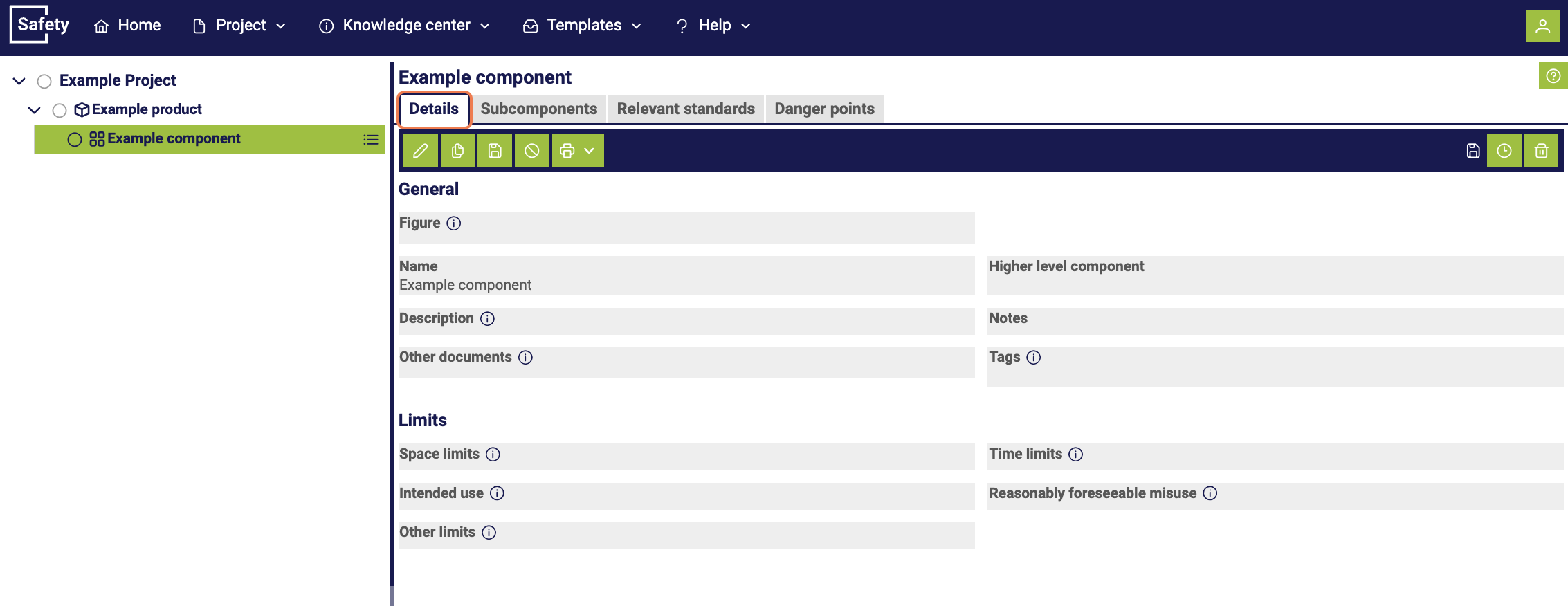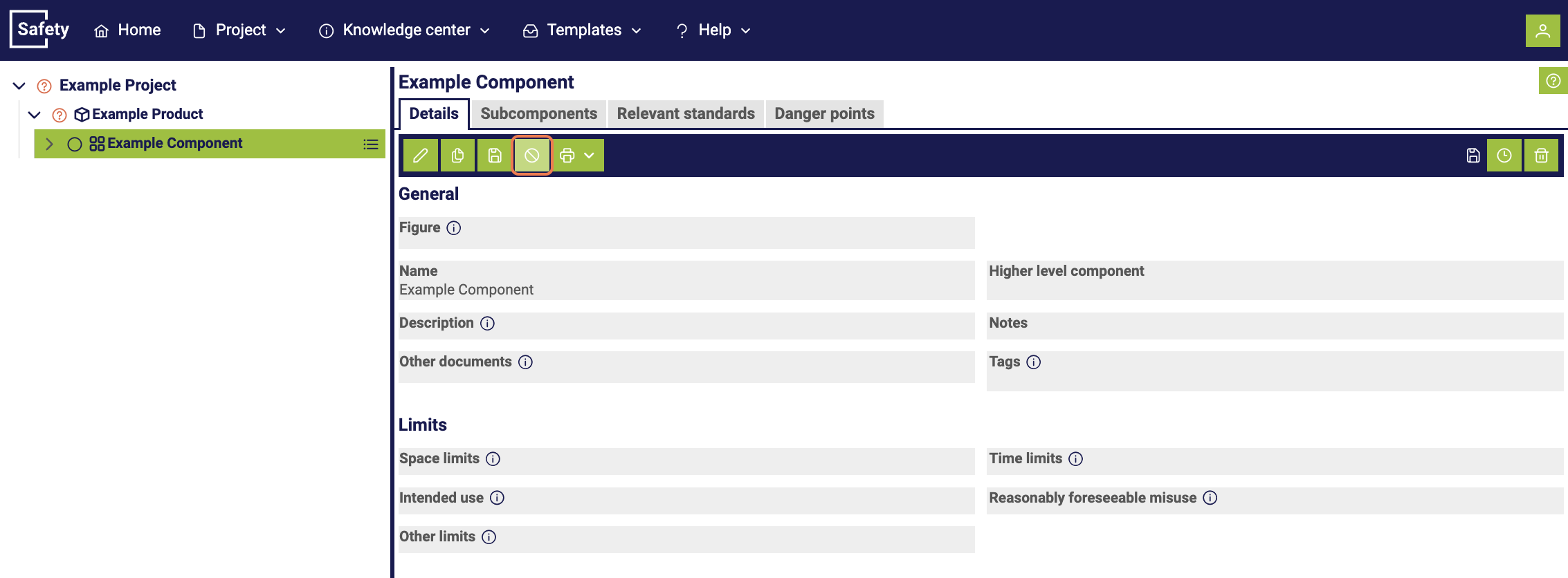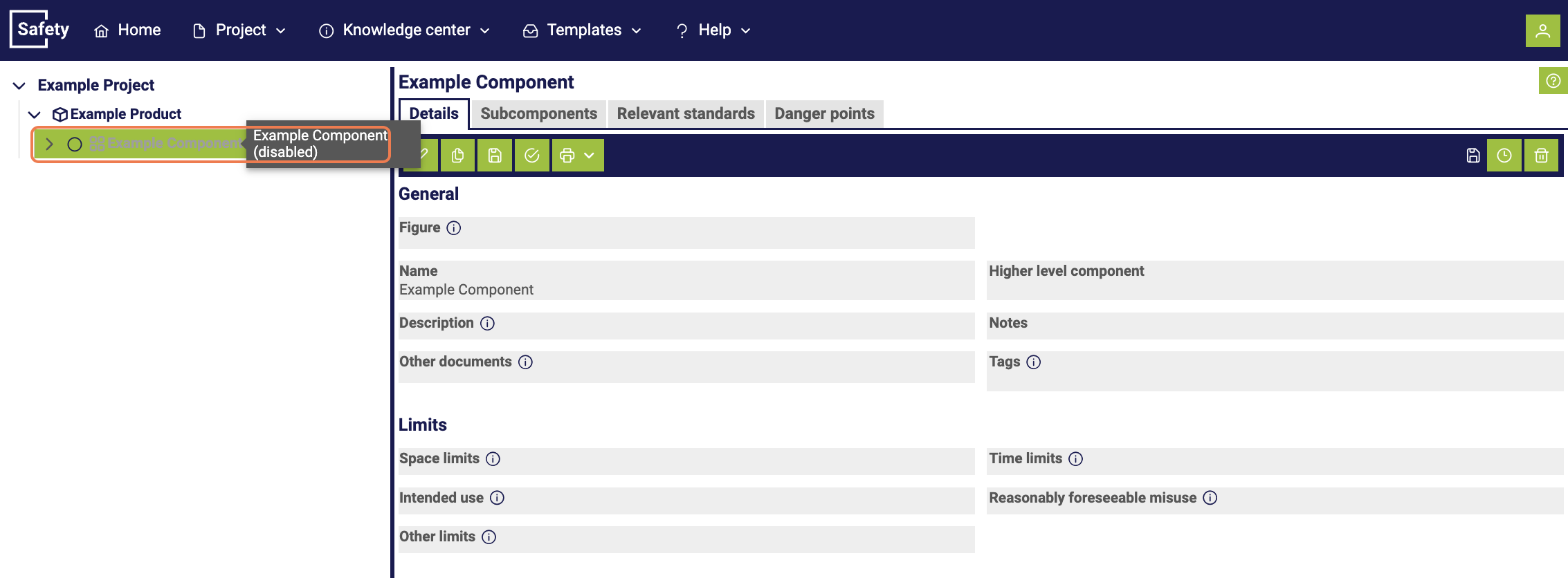Component details
In this view, you have comprehensive options for documenting all relevant information about a component. Depending on the selected component type, this information may vary and serves to capture the data in a structured way, so that it can be used later in reports or other documents. The detailed capture enables a precise analysis and evaluation of the specific properties and characteristics of each component in the context of the overall product.

Disable components
It is possible to disable individual components so that they are no longer considered in the risk assessment. This can be achieved by clicking on the disable button within a component.

Once a component is disabled, it is displayed in gray in the object tree.

When creating templates, it may be important to define certain limits for component templates in addition to the limits of the product itself. These inputs are included in documents, such as the risk assessment. When copying a component to a product, it may be necessary to adjust the limits of the product. There are different types of limits that can be distinguished:
-
Intended use: This step is crucial in the risk assessment, as it sets the limits of the product, including its intended use. It is important to note that not all possible uses of a product are automatically safe. For example, machines designed for metalworking are generally not safe for woodworking and vice versa.
-
Reasonably foreseeable misuse: The manufacturer is expected to consider the reasonably foreseeable misuse of the machine. It is unrealistic to expect that all possible misuses can be considered. However, certain types of misuses can be predicted based on previous experiences, accident investigations, and knowledge of human behavior.
-
Spatial limits: This includes the required operating space of the machine, the space requirements of people working with the machine, and the interactions between human and machine, such as the interface "human/machine" and "machine/energy supply".
-
Temporal limits: This includes the expected lifespan of the machine, the lifespan of wear parts, and maintenance intervals.
-
Other limits: These include properties of the materials to be processed, as well as environmental conditions, such as minimum and maximum temperatures, operating conditions in enclosed spaces or outdoors, under different weather conditions, and more.
In documents like the risk assessment, there is a separate chapter for limits. For each type of limit, the limits of the product are listed first, followed by the corresponding limits of the components, if specified.